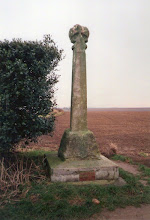My latest project has been inspired by two excellent posts on
TMP:
- An alternate history of the Ottoman and Greek naval build up in the years leading up to WW1 by Leadhead PhD: The War thet Never Was - The Greek-Ottoman War of 1914
- The inspiring (to the point of being intimidating!) scratchbuilding of some 1:2400 pre-drednoughts by Austerlitz06 on TMP.
I wanted to try my hand at a little 1:2400 scratch building and have become increasingly interested in the naval actions of the Balkan Wars leading up to WW1.
As well as the 'what if' scenario around a wider Ottoman-Greek naval conflict, the plan is to build the necessary ships for some naval actions from the First Balkan War. Such as the
Battle of Elli (16 December 1912) - an Ottoman defeat in the mouth of the Dardanelles - and the
Battle of Lemnos (18 January 1913 - the Ottoman Empire's last ditch effort to regain supremacy in the Aegean by breaking the Greek blockade of the Dardanelles.
A quick trip to the model train store for a selection of PVC sheet, and I was in business. My first attempt was the Ottoman pre-dead, the Barbaros Hayreddin - a Brandenberg Class battleship of the Impreial German Navy (1890) sold to the Ottoman Empire in 1910.
My first attempt at 1:2400 scratchbuilding is not in the league off Austerlitz06's work, but I'm pleased with how it's shaping up.
Now, there is nothing like a photo of a miniature to show up its short comings!
The tube used for the funnels is too big and the wire for the main gun barrels is similarly a little too thick. This comes from wanting to finish the first one with available materials rather than holding out for the right stock. That said, I'm quite happy of the look of the masts - made from the 'teeth' of a fine hair comb.
The yards for each mast are next, then lifeboats and the secondary guns in the casements.
Perhaps I'm quietly declaring my bias by building the Ottoman Barbaros Hayreddin first! The Torgut Reis next!























